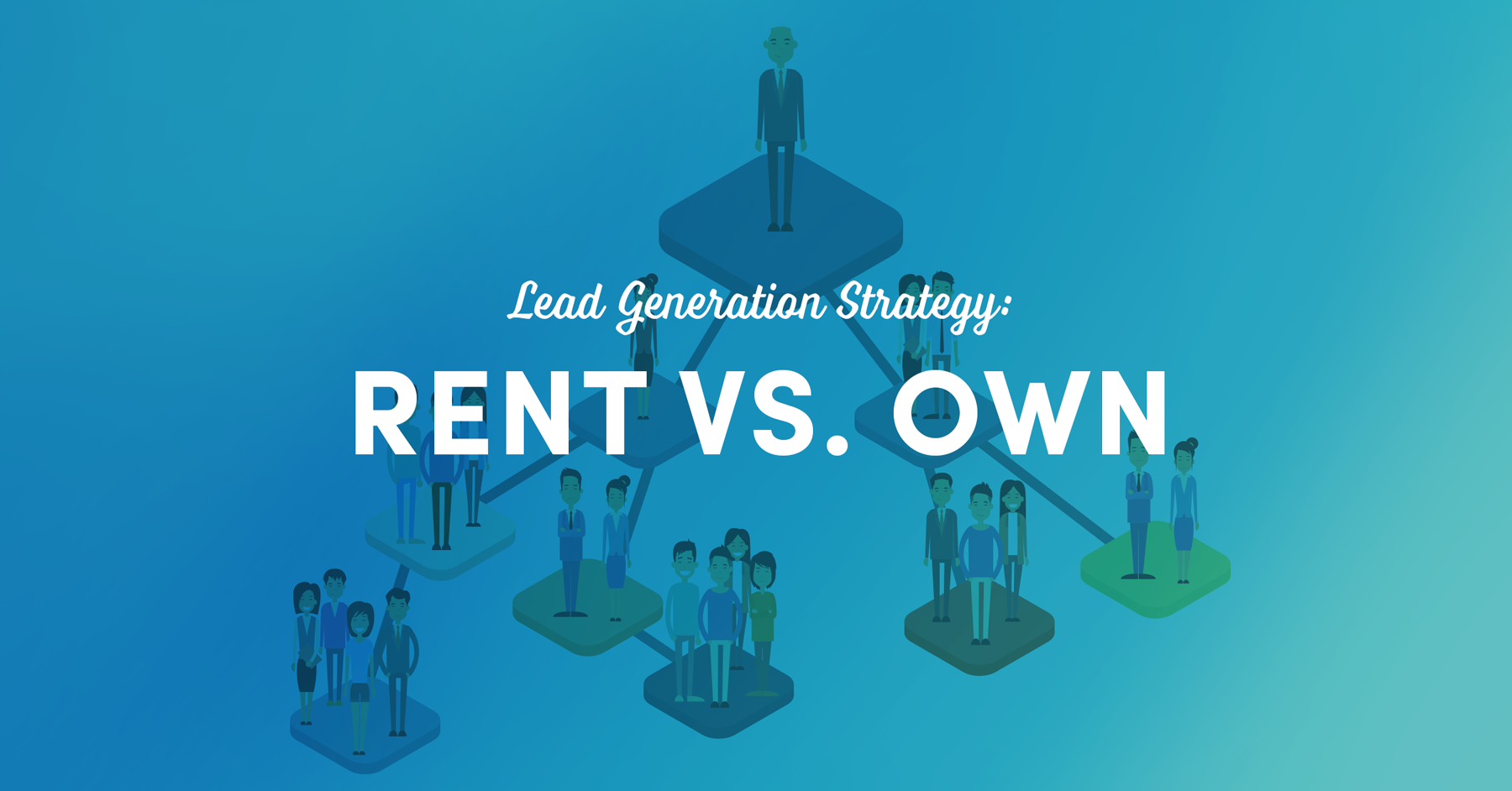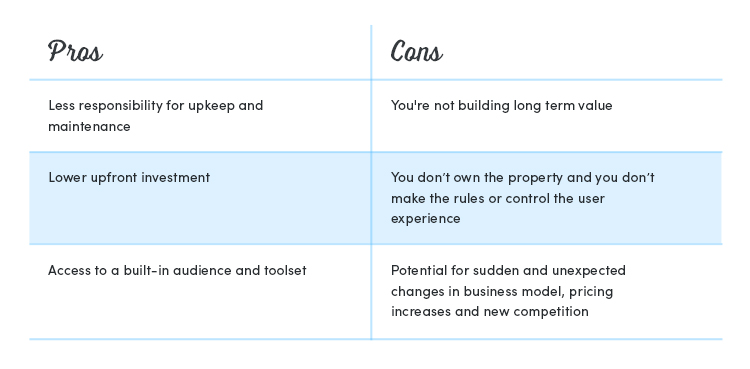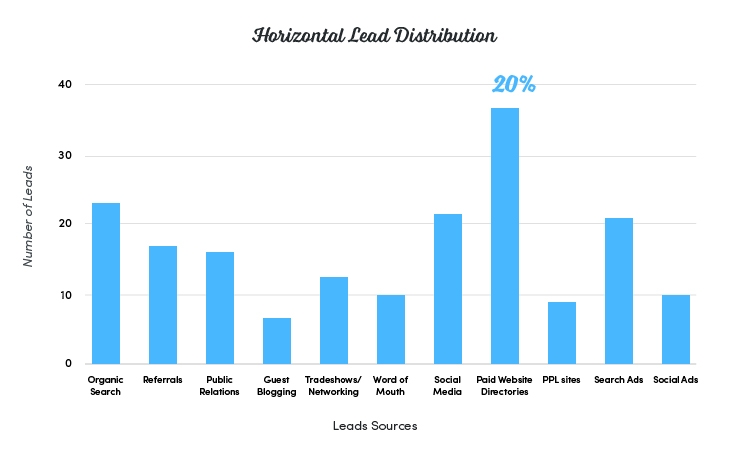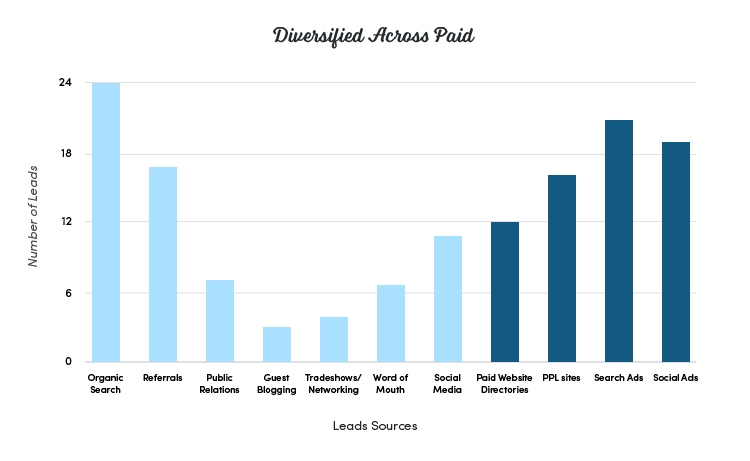
Lead Generation Strategy: Rent vs. Own
Thursday March 9th, 2017Successful lead gen comes down to more than just lead volume, lead quality and closing deals in the short term. Lead source diversification is the key to staying healthy and mitigating your risk as a business.
Is your business actively seeking to generate more leads? Do you know where your leads are coming from? What percentage of your total leads are generated from a single source? Is this lead source rented (i.e. a third party website) or owned (i.e. your website)?
Business owners and marketing execs spend so much of their time trying to figure out how to generate more leads, but often they forget to analyze the sources of those leads and the actual value derived from each lead source.
With a closer analysis, you may find that while lead volume and quality are both great, your lead generation is too dependent on a single rented source.
I’ll give you an example of this. A potential client running a fast growing business recently told me that 90% of his leads were coming from a website directory where they were purchased every month. This is what I mean by a rented property – he doesn’t own the platform that the leads are generated from; rather, he is renting access to his audience through this platform. I could tell from his voice that this figure of 90% was causing him some anxiety, and rightfully so.
Not that I needed to heighten the mood, but had to ask, “… what happens if this website doubles its price for leads, changes its business model or goes belly up?”
I told him not to worry, and that I’d seen this situation before with a number of our clients.
He was at least somewhat relieved to hear that his business wasn’t the only one facing this problem, and we agreed that diversifying his lead sources was paramount.
What percentage of your leads are coming from sources that you don’t control?
Rented Property Pros and Cons
There are pros and cons with any rented property, whether it’s a retail storefront, a Medium blog, a website directory or any pay per lead service.

In order to best gauge the health of your lead generation efforts, lead source distribution needs to be considered alongside other key metrics such as lead volume, lead quality, and cost per acquisition.
Lead source diversification is one of the most important health indicators for sales and marketing teams. I am constantly reporting back to my marketing team when I see our lead sources aligning in a horizontal layout (feeling good) or, alternatively, in too much of a vertical layout (not so good).
With any investment (and we all know marketing is an investment) you want to diversify your potential gains and losses. If you have 10 eggs, you never want 9 in one basket. Hell, you never want more than 2 eggs in one basket if you can help it.
Lead sources that are spread out evenly, in a horizontal manner, are an indication that marketing efforts are diversified, healthy and more sustainable for success. The graph below does not show a perfect spread, but leads are distributed across many sources. The highest source (“Paid Website Directories”) represents just over 20% of total leads.

Whenever I see too many leads coming from one source, my hackles go up. It puts us in a vulnerable position where the winds could change direction and we’d be up shit creek. This is the scenario our is client was in with 90% of his leads coming from one source. The graph below shows over 50% of the total leads coming from a single source (Pay per lead or “PPL Sites”). This is something you want to avoid.

Good lead gen diversification doesn’t always translate into immediate success. However, this lead source analysis shows you how balanced you are and, consequently, how prepared you are to handle an event such as the sudden notice that one of your lead sources will be doubling their price per lead. In addition to looking for an even spread, I look to see how many of our leads are organic, and therefore (somewhat) within our control vs. pay to play, where we are at the mercy of the rented property.
I will say, though, that diversification across paid channels is better than no diversification at all. In other words, it’s better to be spreading your ad spend and lead gen across a number of paid channels including search ads, social ads, paid directories, PPL services, etc., than putting all of your spend into one of the options.

Going back to my conversation with the potential client, I assured him that we had seen other clients run into the same kind of problem he was encountering, and that there were proven solutions we could pursue, albeit more long-term in nature.
The Long Term Solution
You don’t have to stop spending on rental properties, but you can allocate more of your time and budget to investing in properties you own.
One of my favorite long term strategies for shifting from rental properties to ownership is building a long term content strategy. In many cases, this can be in the format of a content hub on your website that responds to the most popular topics and questions from your potential customers with educational and informative content. Here’s a guide for Creating A Successful Content Hub.
This solution provides value to your customers while also creating a long term lead generation technique with tons of upside.
If you are building equity in an owned property, you’re designing your own future. When your organic traffic starts to pick up and the leads start coming in, you’ll be less at the mercy of outside forces and the whim of other organizations. You are removing yourself from the bloody shark infested waters where your livelihood can be snatched away from you in an instant. You are blazing your own trail, and trust me, it will feel phenomenal when the investment begins to pay off.
While you are building to “own,” continue to track lead source diversification and sustainability. For example, if your top lead source brings in 50% of your leads, set a goal to lower that source to 20% in the future. You’ll be in a much better position to survive a collapse of any of your lead generation sources.
The trick is focusing on long term gains, and building up content inventory to drive sustainable traffic and growth. It puts you in a defensible position. The investment will free you from the shackles of your rented lead generators, and ROI has the potential to increase exponentially, the more you invest in your owned properties.
Did you enjoy this article? Continue on with Lead Generation Strategy: Closing The Loop